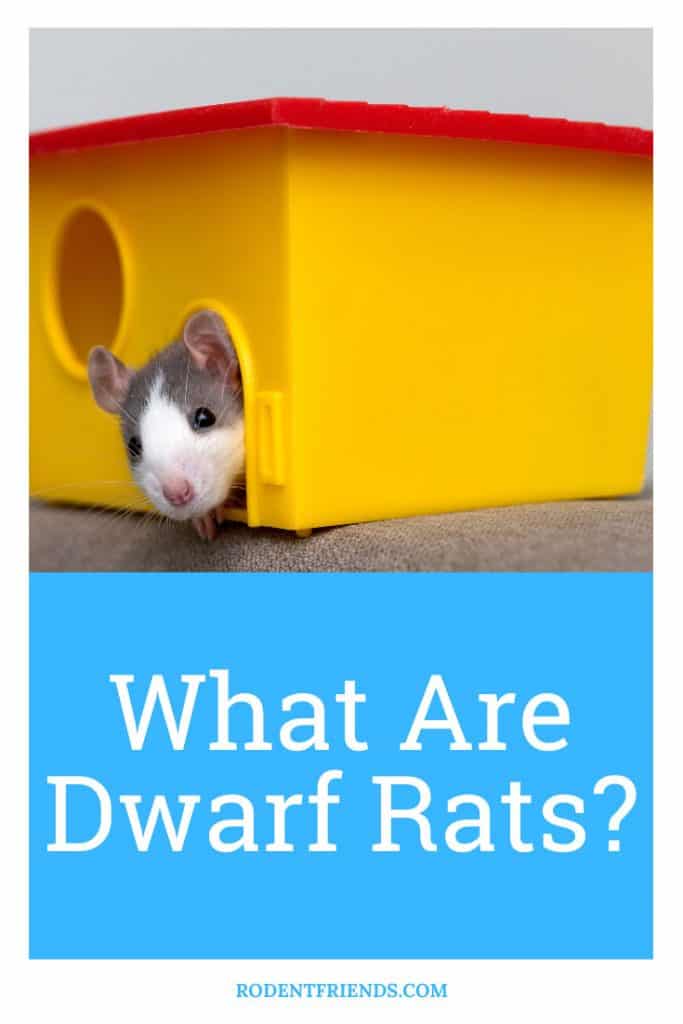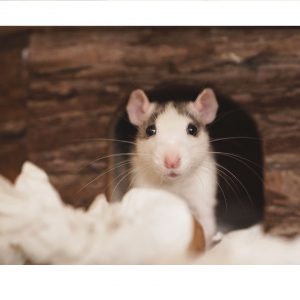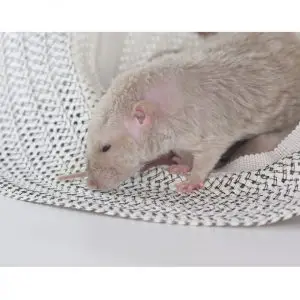If you’ve heard of a dwarf rat, then you’re likely wondering what they are, how they differ from most other rats, and why they’re increasing in popularity.
Surprisingly, dwarf rats are quite a recent discovery. They’re often confused with mice, but they have the genetic DNA of a rat.
Dwarf rats are rats that have a recessive gene that reduces their ability to produce the necessary growth hormones. This genetic disposition limits them to around 70% of the size of an adult rat. However, dwarf rats act the same as their full-grown counterparts. They make excellent pets, too!
Throughout this article, you’ll learn everything you need to know about dwarf rats, including how long they live, how big they get, and whether or not they make good pets. You’ll also learn how to find and take care of a dwarf rat.
Do Dwarf Rats Make Good Pets?
Dwarf rats make good pets because they have similar temperaments to full-sized rats. They can be energetic, playful, and very affectionate.
Some dwarf rats are a bit livelier because they fill up less space in their cage. When they have more room to move around, they tend to get a bit energetic. However, this encourages healthy exercise.
According to Atlantis Rattery, some dwarf rats are more comfortable when they’re held. They also don’t run too far when they’re out of their cage because they’re a bit calmer.
This calmness makes them better for children and people who want a low-maintenance caged pet.
They still need to have play time outside of the cage several times a week.
But of course, this all depends on the rat’s personality. Just like regular pet rats, dwarf rats are very different from each other and have different personalities. Some might be more energetic, while others prefer to cuddle.
This is why it can be helpful to get to know your future pet rats, before bringing them home. By doing this, you can get a glimpse of their personality and choose an animal that is compatible with you!
How Long Do They Live?
Dwarf rats typically live up to three years. Their lifespan is the same as most other rats because their lack of genetic growth hormones doesn’t hinder their longevity.
However, some dwarf rats have a reduced chance of tumors and other growths, which could make them live a little bit longer than other rats.
The best way to ensure your dwarf rat lives as long as possible is to follow these suggestions:
- Only feed them food intended for rats (high-salt, high-fat, and high-sugar diets can cause long-term health issues).
- Let them play outside of their cage daily.
- Keep a running wheel in their cage to promote exercise.
- Bring them to a local veterinarian for regular checkups.
This kind of care goes to both dwarf and regular pet rats. Even though they can entertain themselves inside their cage, they do need extra activity as well as attention from you.
They’re very sociable animals and that’s something you should nurture if you want your rodent friends to live a happy and long life.
How Big Do They Get and How Much Do They Weigh?
Dwarf rats grow to be about 40% to 70% of the size of adult rats. Many people confuse them with mice because they’re so small.

However, mice and rats have different temperaments, diets, play schedules, and lifespans. Let’s break down the two variables that affect how big your dwarf rat will likely get:
- Weight: Male and female dwarf rats average about 100 grams, which makes them about ¼ to ½ the weight of a normal rat (Source: Once Upon a Mischief). While some of them can grow up to 150 grams, it’s not uncommon for them to be even smaller than the aforementioned 100-gram estimate.
- Size: Dwarf rats can be as small as ⅓ of the size of a normal rat. This means they’ll be about 3 to 4 inches long in most cases (this measurement includes their tail). If your dwarf rat keeps growing after this length, it could mean the breeder didn’t properly disclose the rat’s growth hormones.
How to Get a Dwarf Rat
To get a dwarf rat, keep these suggestions in mind:
- Find a reputable breeder. Some breeders might claim they have dwarf rats to make more money. There’s not much of a size difference between dwarf rats and regular rats when they’re born. However, a reputable breeder knows how to tell the difference and make sure you’re getting the right pet. It’s always good to research well and long, so you’re sure you are getting exactly what you want!
- Check the parent rats’ DNA. If two rats don’t have the recessive growth hormone gene, they won’t have a dwarf rat. However, if two rats have the same growth hormone trait, there’s a ¼ chance that they’ll have at least one dwarf rat. Never get a dwarf rat if both parents didn’t have the trait because it’s likely just a runt.
The best thing to do when getting a dwarf rat is to have patience. Never rush to a non-reputable breeder. It might take a few weeks or months to find one, but it’s well worth the wait.
How to Take Care of a Dwarf Rat
Just like any other pet rat, dwarf rats need attention and care so they can grow happy and healthy.
It’s important to find the best food for them, as well as keep their cage clean and provide them with enough toys and activities!
To take care of a dwarf rat, follow these instructions:
- Provide food for your dwarf rat two times each day. Keep an eye on their eating habits. Dwarf rats occasionally overeat. Pet rats in general, both dwarf and regular, will eat anything you put in their cage. If you’re not careful, they’ll gain weight and that will bring unwelcome health problems.
Although many pet rats learn to ration their food, so it lasts them for the whole day, sometimes you need to take charge, so they don’t overeat.
If that happens, consider feeding them right when you wake up, then about half an hour before you go to bed. Remove their food bowl from their cage after about 30 minutes to keep them on a reliable feeding schedule. - Keep a water bottle attached to the side of their cage. Many people like to add a bowl of water to the cage, so pet rats can drink from it. However, that can lead up to accidents and they might be out of water without your notice.
Personally, I like to leave a small water bottle, like this one on Amazon. This way, they’ll always have water, to keep them from getting dehydrated. The bottle should have a leak-proof ball that only drips water when the dwarf rat goes for a drink. Keep the bottle full and change it every couple of days to keep debris out of it. - Put toys and exercise items in their habitat. The Kaytee Comfort Wheel is an excellent example of an exercise item for your dwarf rat. This eight-inch wheel doesn’t take up too much space in their cage, but it provides plenty of health benefits. It also comes in a 5.5-inch variant. Both sizes come in purple and blue.
Other than that, there are a lot of toys and accessories that you can add to their cage. It’s important to fill their home with interesting objects and activities, so they don’t get bored and keep their minds active.
Here is a list of 11 Pet Rat Toys, including some you can do yourself! - Bring them to the veterinarian twice annually. Dwarf rats (and normal rats) don’t live as long as most other pets. They need to have regular checkups to prevent them from developing diseases. Pet rats, in general, are very fragile creatures and prone to respiratory diseases and tumors. Even if they look well, it’s important to let a professional assess them, so you’re 100% sure your pet rats are doing good.
Identifying potential health problems as early as possible will prevent them from getting too serious. It will also increase their chances of surviving and continue living a healthy life! - Play with your dwarf rat and show them affection. Dwarf rats need plenty of attention to prevent them from getting lonely. Loneliness can cause depression and anxiety, which causes health problems for your dwarf rat. It’s best to play with them daily in addition to the toys in their cages.
Not only that, but it’s important to always own at least a pair. Even though they like our company and are always happy to play with us, we are not of the same species. We can’t also be with them 24h a day.
They need companions to sleep with, play with, eat with and even groom with. Some of these activities we can’t replicate as well.
Due to their energetic demeanor and need for activity, it’s good to let them out of their cage, every day. This is the perfect opportunity for you to play with them, teach them new tricks, and grow your bond deeper!
And if you’d like to learn more about all kinds of varieties of pet rat, and some extra fun facts, check out this article!





